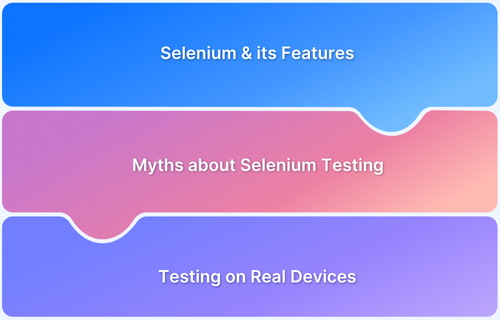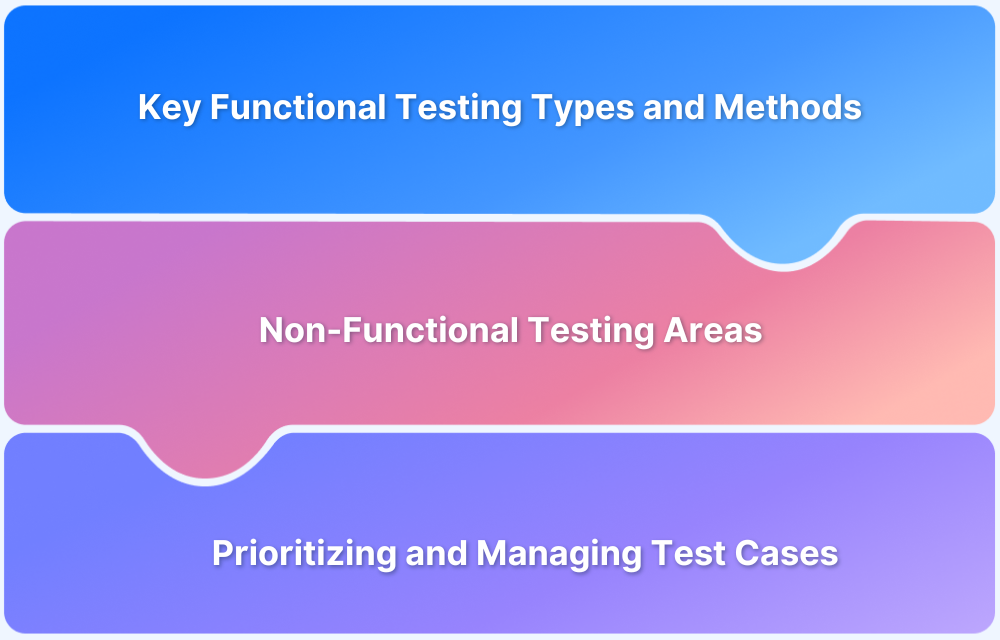For any software to provide a seamless user experience, it must be comprehensively tested. This is especially true when it comes to verifying whether an application satisfies it’s business requirements. Here’s where functional testing plays a vital role. It helps QAs evaluate whether the developed functionalities conform to expected standards.
Software testing is an extensive domain involving multiple testing techniques and categories. As a result, people often end up somewhat confused when trying to understand the role of each form of testing. Naturally, certain myths can crop up regarding how testing techniques work and what results they provide.
This article aims to debunk myths surrounding functional testing so that QAs or developers can be aware of facts, and implement ideal test practices.
Myths About Functional Testing
Functional testing is vital in verifying whether an application meets its intended requirements. However, several misconceptions can lead to inefficient testing strategies and flawed expectations.
Common myths about functional testing:
- Functional Testing is the same as End-to-End Testing: Functional testing checks features, while End-to-End testing validates the entire system.
- Functional Testing covers System Testing: System testing is broader and includes functional testing.
- Functional Testing can be performed at the end: Late testing increases risks and costs.
- Performance Testing is part of Functional Testing: Performance testing is non-functional and assesses scalability and reliability.
- All Functional Test Cases Should Be Automated: A mix of manual and automated testing ensures better coverage.
Each myth is debunked and explained in detail below.
Myth 1: Functional Testing is the same as End-to-End Testing
They are not the same. Functional testing focuses on verifying whether the developed functions of software applications work as per requirements specified by the client. Every single functionality is tested by giving specific inputs and verifying corresponding outputs. The actual results are compared with the expected outcomes to verify functionality.
Try Automated Functional Testing for Free
End-to-End testing not only validates the software being tested, but it also tests the external integrations involved in building the software system. In simple terms, End-to-End testing is done after functional testing and system testing to verify whether the entire application flow is working as expected.
Read More: Cypress End to End Testing: Tutorial
Myth 2: Functional Testing covers System Testing
That’s another misconception among many QAs. In reality, it’s the reverse – Functional testing is a part of System testing. System testing is a type of black-box testing conducted on a fully integrated software product. System testing helps QAs or developers verify the following aspects:
- Verify system behavior in the production-like environment
- Verify the operation of the entire integrated software as a whole
- Testing the product with data similar to the production stage
Myth 3: It’s fine to conduct functional testing at the end
In many cases, testing teams focus more on enhancing the reliability and availability aspects of the application rather than focusing on functionality. As a result, they end up performing functional tests in the final stages. This negligent approach can prove to be expensive and futile at the same time.
As functional testing helps in ensuring the critical functions of an application works as intended, it needs to be conducted at an early stage. One can only proceed with remaining tests once the system is tested by providing appropriate input, validating the output, and comparing the actual results with the expected ones.
Learn More: Top 15 Functional Testing Tools and Frameworks
Myth 4: Performance testing is covered under functional testing
Performance testing is a part of non-functional testing and is not conducted as a part of functional testing. As discussed above, functional testing just validates if the system functionalities work as intended. Non-functional testing focuses more on examining other vital aspects of software systems like security, reliability, scalability, etc.
Apart from performance testing, non-functional testing also includes load testing, security testing, stability testing, usability testing, and a few others.
Myth 5: All functional test cases need to be automated
There is always pressure to release fast, and development teams try to fast track testing. In such a scenario, many QAs turn to automated testing with frameworks like Selenium WebDriver for testing functional compliance. However, choosing automated testing every time may not prove to be ideal, as it may end up consuming excess bandwidth that can be well utilized for additional optimizations.
Manual testing will always carry its importance as long as humans (developers, QAs) keep interacting with software applications. Besides, the agile approach for software development always encourages incremental modifications to the software functionalities for better user experience – something that requires manual intervention. In such agile environments, automated testing can miss out on specific issues, which would be easier to spot for human eyes. Having said so, QA teams need to maintain a balance between manual and automated testing.
Functional testing is a critical stage in the testing lifecycle, and teams need to have clarity on their functional testing goals. Teams need to be aware of the above-listed myths, as it will help them prioritize their goals for functional test compliance and help them develop a test strategy that satisfies technical and business requirements equally.
Conclusion
Functional testing ensures software quality, but misconceptions can lead to ineffective testing strategies. By understanding and addressing these myths, teams can optimize their testing approach, balancing manual and automated methods to deliver reliable, high-performing applications.
Leverage BrowserStack Automate for seamless functional testing on real device cloud in real user conditions, ensuring flawless user experiences across all environments.






